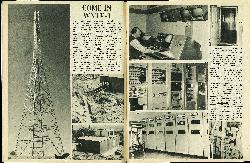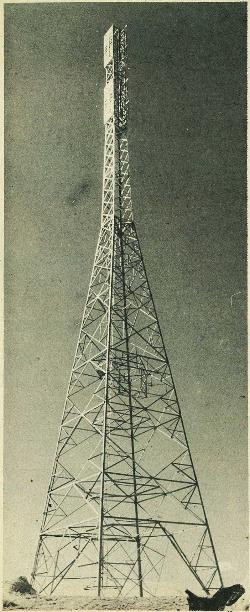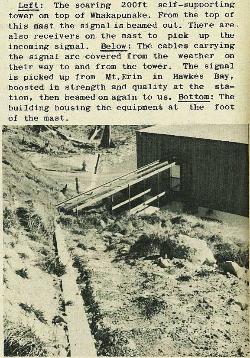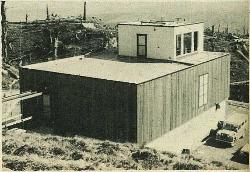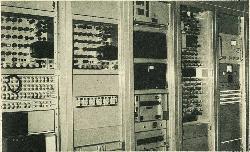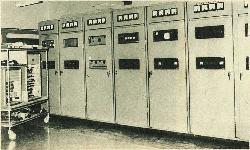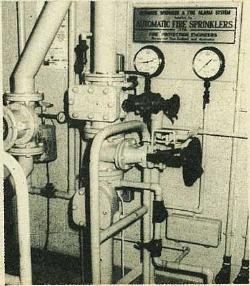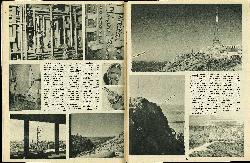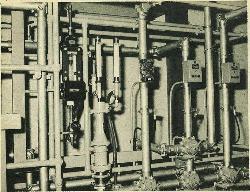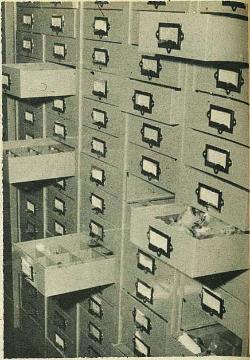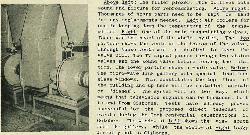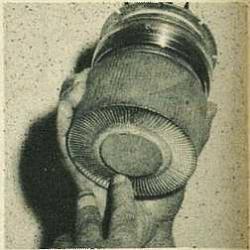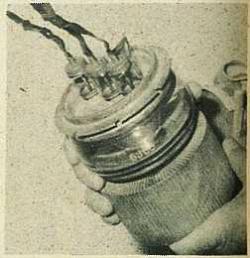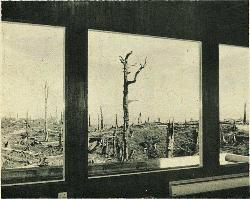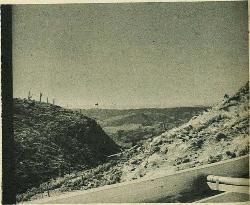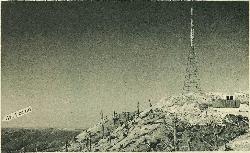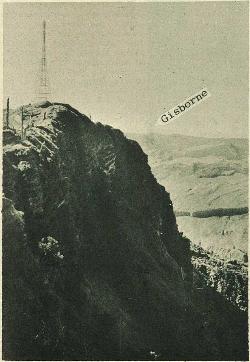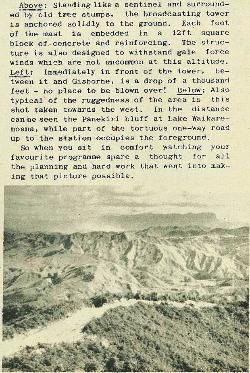12
Come In Wntv-1
With the change in transmission of television from the Matawai translator to the new transmitter on Whakapunake on May 20 most viewers can expect to see a vast difference in the quality of the picture on their screens. At least $200,000 has been spent on the Whakapunake station and transmission tower alone. Roading and the various satellite stations, which will give coverage from Wairoa to Hick's Bay, are not included in this figure. A total of nine satellite translators will bring the Wellington programme to viewers in the East Coast area.
The soaring 200ft self-supporting tower on top of Whakapunake. From the top of this mast the signal is beamed out. There are also receivers on the mast to pick up the incoming signal.
The cables carrying the signal are covered from the weather on their way to and from the tower. The signal is picked up from Mt. Erin in Hawkes Bay, boosted in strength and quality at the station, then beamed on again to us.
The building housing the equipment at the foot of the mast.
13
Station superintendent, John Newman, who is in charge of the East Coast television stations, is pictured at the monitor console at which picture, sound and transmitter are all controlled.
The screened link room which will eventually house the micro-wave link equipment. The whole room is especially lined to eliminate any electrical interference. At present the signal is broadcast but will go over to micro-wave in due course. Micro-wave is at present being installed from Auckland through to Dunedin. After this main trunk system is finished branch links will then be established.
The standard control houses equipment containing amplifiers and generators for operation of the monitor console.
The actual transmitting equipment is housed in these cabinets which are always locked while transmission is in progress.
A fire sprinkler system ensures safety and automatically cuts off power in the unlikely event of a fire.
14
The filter plexer. This combines both sound and picture for rebroadcasting.
Thousands of spare parts need to be kept on hand for any replacements needed.
Air coolers for use in keeping down the temperature of the transmitter.
One of the main transmitting valves. These are the heart of the whole system. The top picture shows the vents at the bottom of the valve. Through these vents air is drafted to keep the valve cool. The TV signal passes through two vision valves and one sound valve before leaving the station. The lower picture shows a whole valve.
The micro-wave link gallery with special lead-free glass windows. This constitutes the top floor of the building and up here will be installed aerials or "dishes". The system will be two way, which means that television signals can be broadcast both to and from Gisborne. Tests have already proved successful for the proposed direct telecast of events during the Cook centennial celebrations in October. The window at left shows the view south from the gallery, while the window at right looks directly out to Gisborne.
15
So when you sit in comfort watching your favourite programme spare a thought for all the planning and hard work that went into making that picture possible.
Standing like a sentinel and surrounded by old tree stumps, the broadcasting tower is anchored solidly to the ground. Each foot of the mast is embedded in a 12ft square block of concrete and reinforcing. The structure is also designed to withstand gale force winds which are not uncommon at this altitude.
Immediately in front of the tower, between it and Gisborne, is a drop of a thousand feet - no place to be blown over!
Also typical of the ruggedness of the area is this shot taken towards the west. In the distance can be seen the Panekiri bluff at Lake Waikare-moana, while part of the tortuous one-way road up to the station occupies the foreground.


